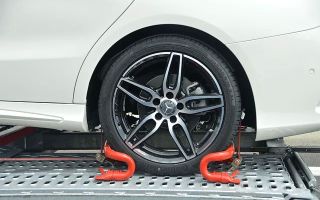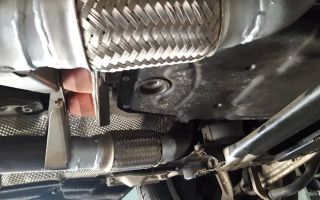How to Handle a Flat Tire Emergency: Essential Roadside Assistance Tips
1. What Causes a Flat Tire and How Can You Prevent It?
Flat tires can happen to anyone at any time, but understanding the common causes and how to prevent them can save you from a roadside emergency. A flat tire is usually caused by one of the following reasons:
- Punctures: Sharp objects like nails or screws can easily puncture the tire, leading to a slow or rapid loss of air pressure.
- Over or Underinflation: Tires that are too inflated or not inflated enough can increase the risk of a blowout or wear down unevenly, increasing the likelihood of a flat tire.
- Old or Worn Tires: Tires that are past their prime or have worn-out tread are more prone to punctures and blowouts. Regularly checking the condition of your tires can help avoid this risk.
- Road Hazards: Potholes, debris, and other road hazards can damage your tire, causing a sudden flat. Avoiding these when possible and maintaining a safe driving speed can reduce the risk.
To prevent a flat tire emergency, it’s essential to regularly inspect your tires for wear and tear and ensure that they are properly inflated. Regular maintenance and timely replacement of old tires are key to keeping you safe on the road.
2. What to Do If You Get a Flat Tire on the Road
Dealing with a flat tire can be stressful, but staying calm and following a few key steps can make the process easier and safer. Here’s what you should do when you experience a flat tire:
- Stay Calm and Assess the Situation: If you notice that your tire is flat, don’t panic. Safely guide your vehicle to the side of the road, preferably onto a shoulder or a parking area away from traffic.
- Turn on Your Hazard Lights: As soon as you pull over, activate your hazard lights to alert other drivers to your presence, especially if you're on a busy road or highway.
- Check the Safety of Your Environment: Before getting out of the car, check for oncoming traffic. If you’re on a highway, remain inside the vehicle with your seatbelt fastened until it is safe to exit.
- Gather Necessary Tools: If you plan on changing the tire yourself, make sure you have all the necessary tools on hand, including a jack, spare tire, lug wrench, and your car’s user manual.
Sometimes, the best choice is to call for roadside assistance, especially if you don’t have the proper tools or experience to change the tire safely.
3. DIY Tire Change: Step-by-Step Guide
If you're prepared and feel comfortable changing the tire yourself, here’s a simple, step-by-step guide on how to do it:
- Step 1 - Loosen the Lug Nuts: Use the lug wrench to loosen the lug nuts on the flat tire before lifting the car. Don’t remove them completely—just break the seal.
- Step 2 - Lift the Car with the Jack: Use the car’s jack to raise the car off the ground. Make sure the jack is placed securely under the vehicle’s jacking point. Lift the car until the flat tire is off the ground.
- Step 3 - Remove the Flat Tire: Once the car is raised, remove the loosened lug nuts completely and take off the flat tire. Set it aside and place the spare tire onto the wheel hub.
- Step 4 - Attach the Spare Tire: Place the spare tire onto the wheel hub, aligning the holes with the bolts. Screw the lug nuts back onto the bolts, tightening them by hand first.
- Step 5 - Lower the Car and Tighten the Lug Nuts: Slowly lower the car back to the ground with the jack. Once the car is securely back on the ground, use the lug wrench to tighten the lug nuts fully in a star pattern to ensure an even fit.
- Step 6 - Check the Tire Pressure: Before driving off, ensure that the spare tire is properly inflated to the recommended pressure level.
While this is a basic guide, always refer to your car’s manual for specific instructions and safety precautions related to your vehicle.
4. When to Call for Roadside Assistance
If changing the tire yourself isn’t an option, it’s always a good idea to have a roadside assistance service on hand. Here are some situations when it’s best to call for help:
- Lack of Tools: If you don’t have a spare tire, jack, or lug wrench, it’s best to call for roadside help to avoid causing damage to your car.
- Uncertainty About How to Change the Tire: If you’re unsure how to safely change the tire or feel uncomfortable doing so, calling for roadside assistance ensures that professionals can handle the situation.
- Unsafe Location: If you’re stranded in a dangerous area, such as on a busy highway or in adverse weather conditions, it’s safest to wait for a trained roadside professional to assist you.
- Flat Tire on a Spare Tire: If your spare tire is flat or damaged, you’ll need professional help to get your vehicle back on the road.
At this point, you can contact a towing service like [Rescue & Towing], which provides reliable and quick roadside assistance. Professionals can either fix your tire, tow your car to a repair shop, or take you to a safe location if necessary.
5. Real-Life Example: A Flat Tire on a Road Trip
Let’s take a look at a real-life example of how a flat tire emergency was handled on a road trip. Jane, a frequent traveler, was on a solo road trip across the country when she hit a pothole on a remote stretch of highway. Unfortunately, it caused a flat tire, and Jane didn’t have a spare tire in the car, as she had recently removed it for maintenance. Initially panicked, she pulled over to the side of the road, turned on her hazard lights, and called her roadside assistance service.
Within 30 minutes, a professional arrived with a tow truck and a new tire. Jane was able to continue her journey with minimal disruption. This example highlights the importance of keeping roadside assistance contact information handy, especially when driving through less populated areas.
6. Why You Should Get Roadside Assistance Today
Flat tires are an inevitable part of driving, but having roadside assistance ensures that you don’t have to face them alone. Whether you need tire repair, a flat tire service, or towing, having a reliable service like [Rescue & Towing] on speed dial can help you stay calm and safe in these stressful situations. If you’re unsure how to change a tire or don’t have the proper tools, it’s always a good idea to call for professional help. With roadside assistance, you can be back on the road in no time.
Don’t wait until an emergency strikes. Make sure to choose a trusted roadside assistance provider like [Rescue & Towing] and keep their contact information readily available.




























